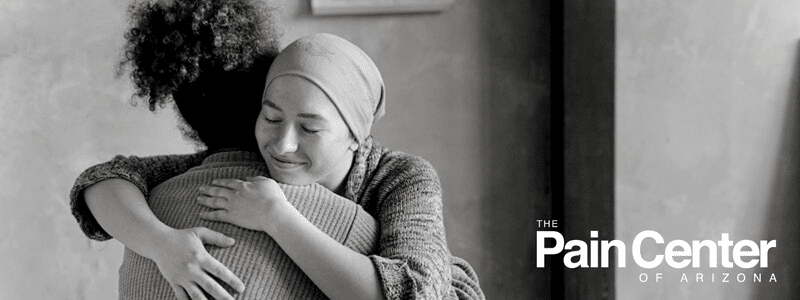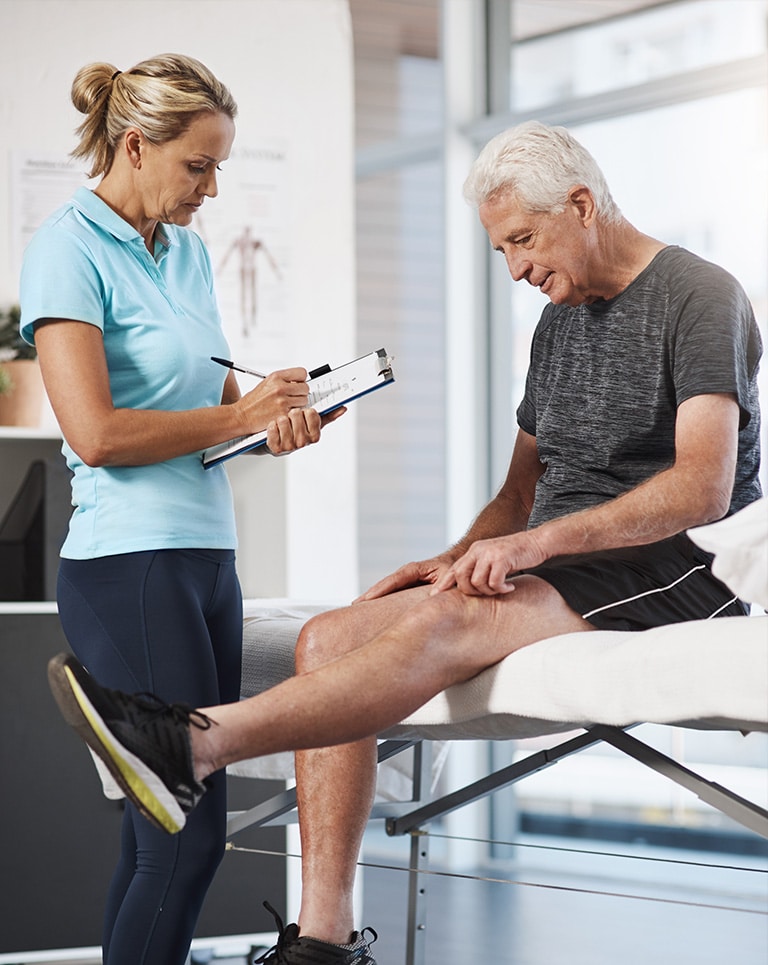
Intrathecal pumps, also known as “pain pumps,” have become a preferred modern solution to relieve pain for cancer patients. Cancer pain remains one of the most undertreated symptoms of the disease and an overlooked area of pain management. Intrathecal pumps are safe, effective, and can treat cancer pain in a variety of patients.
We’ll cover:
- What is an intrathecal pain pump for cancer?
- How do pain pumps work?
- What types of cancer treatments use intrathecal pumps?
- Are intrathecal injections painful?
- What is the success rate of intrathecal pumps?
What is an Intrathecal Pain Pump for Cancer?
Intrathecal pumps, also known as “pain pumps,” have become a preferred modern solution to relieve pain for cancer patients.
An intrathecal pain pump for cancer is a small, round device implanted underneath your skin near the side of your abdomen. It sends pain medicines through a catheter (a thin tube). This allows pain relief medication to be administered directly to the nerves in your spine, granting enhanced relief relative to other treatments.
A cancer patient’s doctor may recommend this if certain oral or intravenous pain medications will cause side effects for a patient or if they feel an enhanced level of acute pain management is necessary. In any case, intrathecal pain pumps for cancer have proven to be very safe and effective.
How do Pain Pumps Work?

The intrathecal pain pump has two main parts – a pump and a catheter.
The pump is a hockey puck-shaped device inserted under your skin in front of your abdomen. It will bulge a bit, but nothing to cause alarm. Check with your doctor to ensure you understand the placement of the pump and how it will work post-operation.
The catheter then connects to the pump, which sends the medication directly into your spinal nerves. This allows for an alternative route of analgesics and other medicines that can provide pain relief.
What Types of Cancer Treatments Use Intrathecal Pain Pumps?
Many different types of cancers can cause chronic pain. Using an intrathecal pain pump will be based on how tumors have spread throughout your body, affect bones or nerves, and create scar formations after surgeries to remove them.
Some of the most common types of cancer patients that receive intrathecal pain pumps include:
- Lymphoma
- Leukemia
- Prostate cancer
- Cervical cancer
- Breast cancer
- Lung cancer
Are Intrathecal Pump Injections Painful?

The goal of intrathecal pump placement is to diminish and manage your chronic pain.
However, you can and will likely experience soreness after the surgery to implant the intrathecal pump, with recovery times usually spanning 6 to 8 weeks following surgery.
Medical professionals recommend following these guidelines during this period post-surgery:
- Do not lift anything over 10 pounds
- Do not bend over or twist to pick things up from the ground
- Avoid exposure to extreme temperatures or going in hot water.
- Consult your doctor before taking any other pain medications during this time.
Additional side effects from intrathecal pumps include itchiness, tenderness around the implant, and nausea. For any pain or side effects, you may experience, contact your pain management specialist or doctor to learn the appropriate response.
What is the Success Rate of Intrathecal Pumps?
Intrathecal pumps are among the most successful pain management methods in modern cancer treatment; over 86% of participants in one study said they would do it again.
Additionally, patients described intrathecal pumps as providing greater relief vs. oral medications, and pain pumps are typically perceived as much more controlled when compared to opioids or other pain management techniques.




